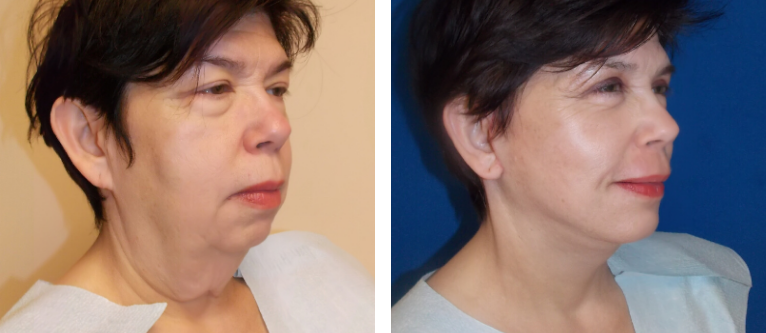The world of aesthetic medicine continues to evolve, offering innovative treatments that use the body’s own healing power to improve skin tone, texture, and overall appearance. Among the most talked-about treatments today are PRP (Platelet-Rich Plasma) and PRF (Platelet-Rich Fibrin). These therapies have gained attention for their natural approach, stimulating collagen production and tissue repair without relying on synthetic fillers or chemicals.
Both PRF and PRP are derived from your own blood, making them safe and biocompatible options for those seeking to restore a youthful appearance naturally. However, while they share a similar foundation, their differences in composition and release mechanisms can significantly influence the results you experience. Understanding these differences can help patients make informed choices about which treatment is right for their aesthetic goals.
As an experienced plastic surgeon in McLean, VA, Dr. experts often guide patients through these choices, ensuring each treatment is tailored to their skin type, needs, and long-term goals. Knowing how PRF and PRP work is the first step to achieving smoother, healthier-looking skin through science-backed regenerative techniques.
What is PRP (Platelet-Rich Plasma)?
PRP, or Platelet-Rich Plasma, is a treatment that uses a small amount of your blood, which is spun in a centrifuge to separate the plasma from red and white blood cells. The resulting plasma contains a high concentration of platelets, the cells responsible for healing wounds and stimulating tissue regeneration.
When injected or applied topically during procedures like microneedling, PRP releases growth factors that stimulate collagen production, accelerate healing, and improve skin texture. It’s often used for facial rejuvenation, scar reduction, and even hair restoration. Because PRP has been used in medical fields such as orthopedics and sports medicine for years, it has a proven safety record.
What is PRF (Platelet-Rich Fibrin)?
PRF, or Platelet-Rich Fibrin, is considered the next generation of PRP. It is created using a slower centrifugation process without any anticoagulants or additives. This method preserves more white blood cells, platelets, and stem cells, all suspended in a fibrin matrix. The fibrin acts as a natural scaffold, allowing for a slower, sustained release of growth factors over time.
The result is a more gradual and long-lasting stimulation of collagen and elastin, making PRF particularly effective for under-eye treatments, fine lines, and areas requiring subtle, natural improvements. PRF is 100% natural and often preferred by patients seeking a completely chemical-free option.
Key Differences Between PRP and PRF
While both treatments use your own blood and are minimally invasive, several factors set them apart:
- Additives: PRP requires an anticoagulant to prevent clotting, while PRF does not, making PRF entirely natural.
- Release Time: PRP releases growth factors immediately, whereas PRF releases them slowly over days, extending the regenerative process.
- Composition: PRF contains more white blood cells and stem cells, which contribute to better tissue healing and collagen formation.
- Results: PRP provides quicker but shorter-lasting results, while PRF tends to produce gradual, more sustained improvements.
These distinctions often influence which treatment a provider recommends based on the area being treated and the patient’s goals.
Applications in Aesthetic Medicine
Both PRP and PRF are used for facial rejuvenation, hair restoration, and improving skin tone and texture. PRP is ideal for procedures requiring immediate stimulation, such as microneedling or post-laser recovery. PRF, on the other hand, is favored for delicate areas like the tear troughs or for patients seeking natural, subtle improvements without additives.
Additionally, PRF’s slower release of growth factors makes it suitable for long-term collagen stimulation, leading to results that continue to improve over time.
Which Treatment Is Better for You?
Choosing between PRP and PRF depends on your skin concerns, treatment goals, and overall health. Patients looking for quick rejuvenation may prefer PRP, while those who prioritize natural and longer-lasting results may lean toward PRF. Consulting with a qualified aesthetic specialist ensures your treatment plan aligns with your skin’s unique needs and desired outcome.
Safety and Recovery
Both PRP and PRF are exceptionally safe since they come from your own body, minimizing the risk of allergic reactions or complications. After treatment, patients might experience mild redness, swelling, or sensitivity, which usually subsides within a few days. Most individuals can return to normal activities shortly after their session, making these treatments convenient options for busy lifestyles.
The Future of Regenerative Aesthetics
PRF is increasingly recognized as the next step in regenerative medicine, offering a more holistic and sustained approach to skin health. As research continues, more advanced applications are being developed to further optimize collagen regeneration and tissue repair naturally.
PRP and PRF are leading the way in regenerative aesthetic treatments, providing patients with safe, effective, and natural options for improving skin tone, texture, and elasticity. While PRP has long been trusted for its rejuvenating effects, PRF offers a refined evolution of this technique, delivering longer-lasting and more natural-looking results.
Whether you’re addressing fine lines, dullness, or under-eye hollowness, both treatments can be customized to meet your goals. The key is working with an experienced provider who understands your unique skin needs and can recommend the right approach.
For those seeking guidance from a skilled plastic surgeon in McLean, VA, Washingtonian Plastic Surgery offers personalized PRP and PRF treatments designed to support your skin’s natural healing process. Schedule a consultation today to learn which regenerative therapy best suits your aesthetic goals.








